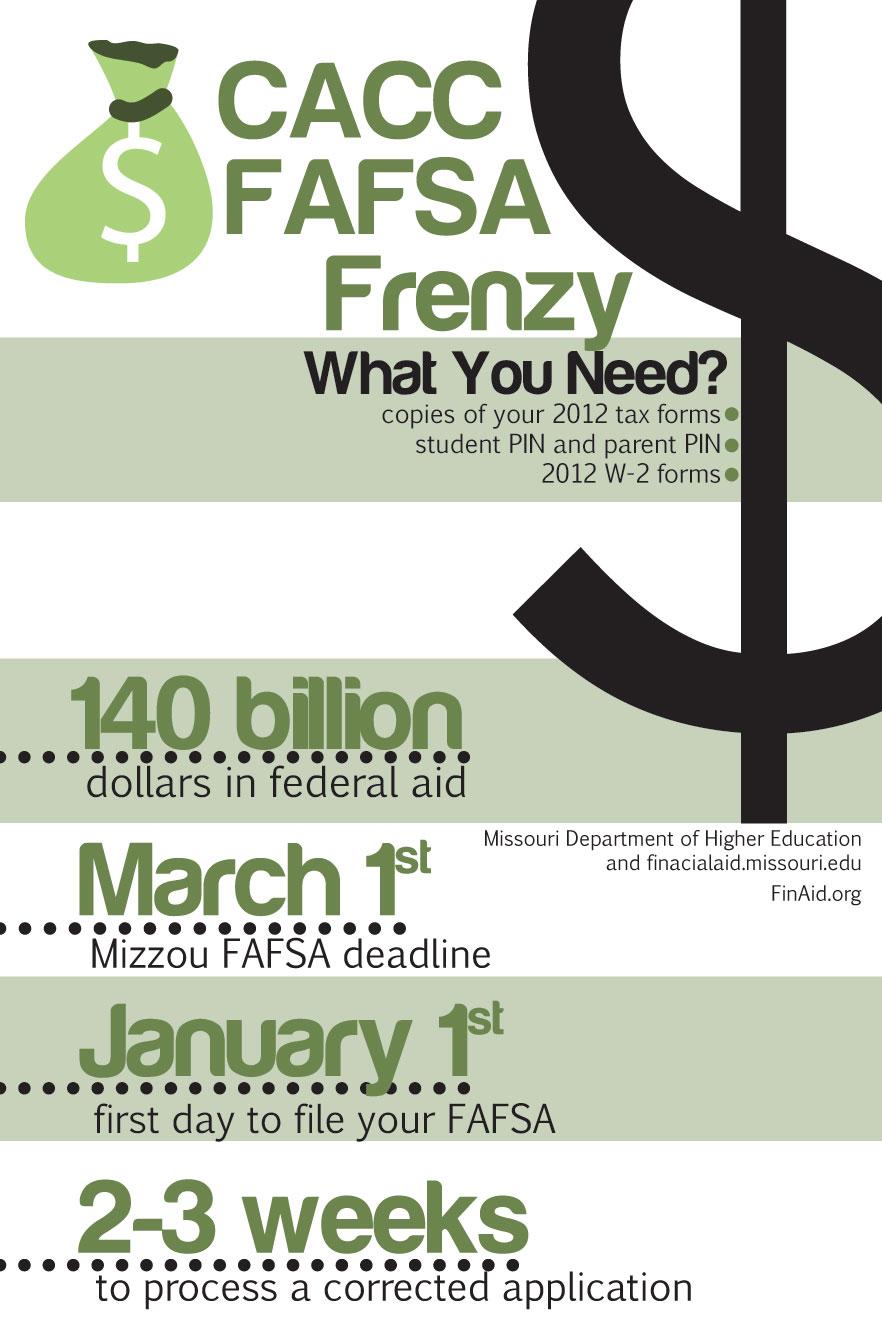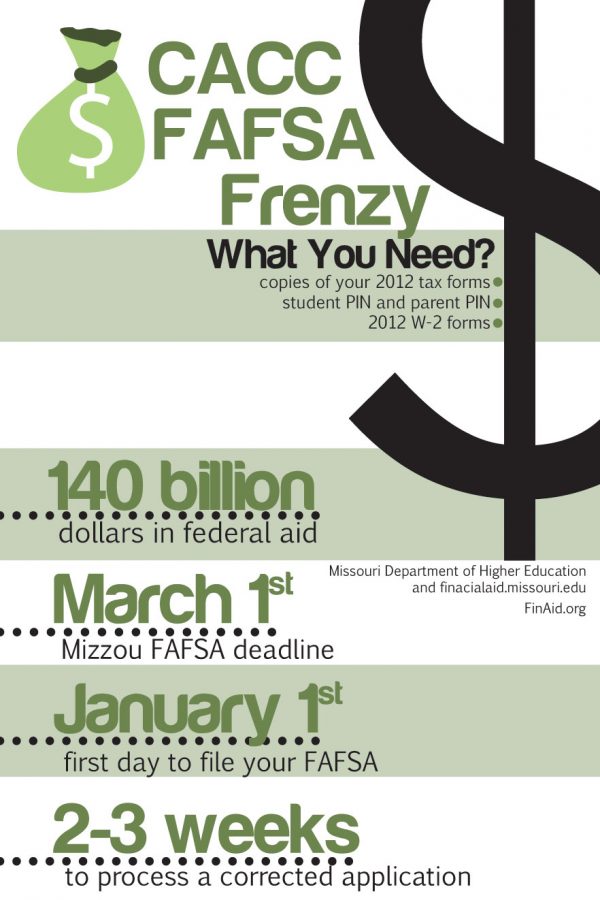
Senior counselor Rachel Reed said the FAFSA is a requirement for the A+ program, and many other non-federal scholarships require the certified form as well.
“From community scholarships, individual scholarships and scholarships through their institution,” Reed said, “a lot of our students actually apply for the FAFSA for scholarship reasons, even if not for loans or financial aid.”
Because of the difficult nature of the form, and the large amount of students that need to apply, the Columbia Area Career Center hosted a “FAFSA Frenzy” on Feb.16. Parents came and registered with their children, and watched a video about the financial aid and how to fill out the FAFSA form. Then administrators took the parents to computer labs where they actually filled out the form. There, financial aid experts from higher education facilities and institutions and the Department of Higher Education had a representative come answer any more difficult questions.
“[The FAFSA Frenzy] makes it a lot easier to complete,” Reed said. “Sometimes parents come and just stay for the video, ask a few questions and leave and fill it out on their own because it’s that easy to do at home.”
Senior counselor Jane Piester said this year’s Frenzy was more important than in years past, because of the increased burden of college costs. Along with tuition costs increasing, prices for books and room and board have gone up as well over the last few years.
“The cost of education is going up, some schools are more economical than others,” Piester said. “Parents are a big motivating factor for students to complete the FAFSA, probably nine times out of 10 parents are the ones to complete the FAFSA because they have the numbers it’s based off.”
The FAFSA program can offer a lot of help to families with multiple members attending colleges because as the number of household college attendees goes up, so does the amount of financial help offered by FAFSA. Keeping college tuition low is a priority for senior Blake Ward, who wants to attend either Michigan University next year to study either Chemistry or Physics.
“I will be applying for FAFSA because it would help lower costs for college and open possibilities to the colleges I can go to,” Ward said. “My mom is going back to college and my brother is going to college for the first time, so its a lot of college bills and financial aid would help a ton.”
The Missouri Department of Higher Education responded to the plea of students to help lower the costs. They hosted 55 locations around the state to help with completing the FAFSA. The first year is the most confusing, but students must remember to reapply every year. Even counselor Sam Martin must fill one out this year for his Ph.D program.
“The federal government doesn’t give grants through the FAFSA for graduate education, so I’m applying for loans,” Martin said. “It helps because I can pay a certain amount out of pocket, like I can pay my books out of pocket, but I can’t pay cash for my whole program so the government offers me.”
According to the FAFSA website, the federal government offers more than $150 billion each year to help millions of students pay for higher education, in federal grants, loans, and work-study funds. It’s not too late to fill out a FAFSA form either; the University of Missouri-Columbia’s deadline for the form is April 1.
“It definitely doesn’t hurt to complete the FAFSA,” Reed said. “A lot of students think there’s no point and that they’re not going to get grants or free money from their institution, but they don’t realize that you have to fill out the FAFSA for scholarships sometimes and if they want to apply for loans they have to have the FAFSA filled out also. Its more than just the grant, its more than just what the school is going to give you as far as free money, it’s part of the whole financial aid package that comes with your school.”
By Sam Mitchell













































































